Hashtags are taking over the Internet. Initially, they were designed to organize content and simplify searches (for users and algorithms), but they quickly became a way of expressing oneself.
As such, hashtags have become an integral part of marketing campaigns. Having a dedicated hashtag for an event or product helps with it gaining social media attention and driving engagement.
? Read Media Monitoring: The Ultimate Guide
Have you already created your own hashtag or do you already follow those you use the most? Great! But that’s not the end of the process.
Now it’s time for analyzing the performance of your hashtags. Let’s see how to start #hashtagtracking.
What is Hashtag Tracking and Why Should You Do It?
With the increasing use of hashtags, the following phenomenon has occurred – #people #have #started #to #overuse #them.
From a marketing point of view, using too many hashtags is totally useless.
To make hashtags work and actually drive traffic to a specific topic, they need to be appropriately selected. So, you should keep analyzing them to be sure that you’re using effective ones.
Okay, but what is it all for? Isn’t it easier to just click on a hashtag and see all of the posts that way?
It is, but then you just see the number of posts and nothing more. You’ll therefore lose a lot of valuable data giving you a more realistic overview of your campaign.
Hashtag tracking allows you to see how a particular hashtag is performing. You can track hashtags across multiple platforms, measure, and prove their impact.
#
To begin tracking, you will need a social media monitoring tool. Determ tracks millions of sources in real-time. So, if your hashtag gets used, the tool will immediately track it down and can inform you via Slack, email, or the Determ app.
Thankfully, there is no more need to create spreadsheets and track hashtags manually. Instead, you can do it effortlessly and create branded reports in a matter of seconds.
Step #1 – Choosing the Right Hashtag to Track
Throwing a random hashtag into a tracker isn’t going to grow your audience. In the beginning, you should carry out thorough research to determine which hashtags will result in the best analysis.
Choosing the right ones is the process.
Learn from influencers
The role of influencers in marketing is crucial, and so you might benefit from searching for such people in your niche. Through them, you can determine which hashtags are the most successful and then use them for your brand.
Research your competitors
To get inspired, you should see what your competitors are doing. Look at brands with similar content and target audiences. Don’t forget about industry leaders.
Research the audience
Find out which hashtags your audience is using and make them fit the content you wish to publish. Use hashtags that are relevant to what your audience is searching for.
Discover trends
Analyze your best-performing posts and see which hashtags you should continue to use.
Once you’ve done this research, make sure you don’t make one of the common hashtag mistakes.
A successful hashtag should be:
- short and readable
- unique and catchy
- easy to remember
- relevant for your brand and content
Checked it all? You are now ready to dig deeper into hashtag tracking.
Step #2 – Typing in the Hashtag(s) as a Query
To start tracking your hashtags, you need to integrate your social media accounts first.
After that, click Create new query (or if you want to add a new query to an existing folder then click Add new query).
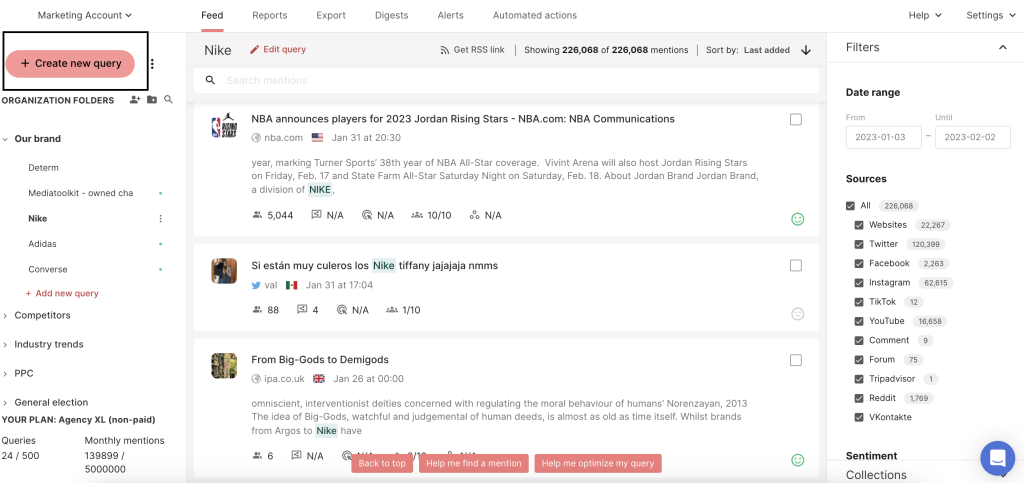
Set a query and type your hashtag to start tracking it.
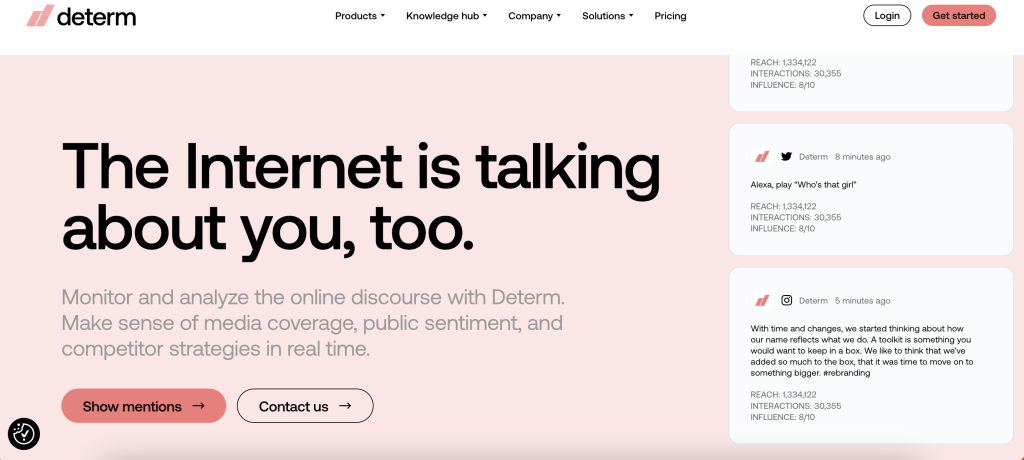
Tip: If the hashtag has been used recently, you will get some results in seconds. If not, you will have access to the data as soon as people start to use this hashtag.
Let’s assume that you are organizing an event for the occasion of #NationalDogDay. As a huge dog lover, you want to analyze what people say about this day (and look at pictures of cute doggies). By the way, hashtag tracking is excellent for finding user-generated content.
What can you see after typing this hashtag into a query setting?
As you can see, all of the hashtag results are in one place. Suppose you want to limit hashtag tracking to just one particular source, e.g. Twitter, then no problem. You just need to use the available filters and “tick” the ones that you want to track.
You can also filter the results by date range, sentiment (more about this later), or even choose such options as “show images” or “similar group mentions”.
To conduct a more thorough analysis, you should use Boolean operators. This way, you can track all related hashtags or even variations on them. As a result, you can create the context for more precise searches. If necessary, you can narrow down or broaden a search when needed because the number of keywords is unlimited.
Step #3 – Analyzing the Reports
The next step in hashtag tracking is creating a report about the results. I’ve got some good news – in Determ, you can create a comprehensive media monitoring report in a matter of seconds.
This is crucial – with reports just a few clicks away, you’ll have more time to work on more urgent tasks.
If you have a more untypical hashtag to analyze, make sure that you set the query at least 24 hours before creating the report. That way, the tool will have enough time to collect the most relevant data for you.
In Determ, you can choose from three different report types. It all depends on what exactly you need.

The first three – Basic, Advanced report, and Competitive analysis – are predefined dashboards. The graphs in them are the most popular and commonly used ones by our customers.
- Basic report: a quick overview of mentions, total impressions, sentiment, locations, and a Word cloud.
- Advanced report: a detailed analysis with a breakdown of the most important metrics such as Top sources, Top impressions, and Top locations.
- Competitive analysis: a report that gives you a competitive insight and benchmarking. This one is beneficial in hashtag tracking, so we’ll take a closer look at it in #Step 5.
Tip: If you want to create a report, you can start from scratch and design a customized dashboard. It’s important to note that even predefined reports are customizable. This means that you can modify/add/remove graphs to suit your particular needs and preferences.
You can export all of the reports to an Excel spreadsheet, PDF, Word document, or to “mentions in an email”.
#Step 4 – Including Sentiment Analysis
Now it’s time to analyze the hashtag based on the sentiment. Determ automatically detects the sentiment of your mentions. A dashed line next to a post indicates the sentiment: green (positive), grey (neutral), or red (negative).
You can also easily filter the results by their sentiment. This might be crucial if you want to identify whether a campaign is a success or not.
Tracking hashtag sentiment is also helpful for detecting some negative comments. You can respond quickly and put out fires as soon as you notice them.
It’s important to monitor the sentiment of hashtags constantly. You can:
- Check the sentiment ratio:
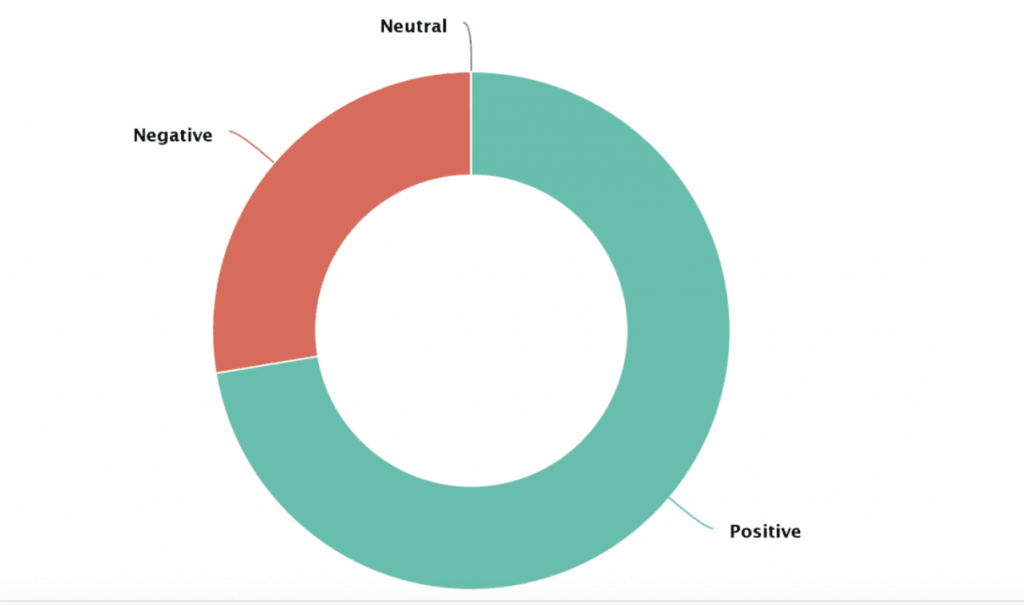
- Analyze the sentiment by sources
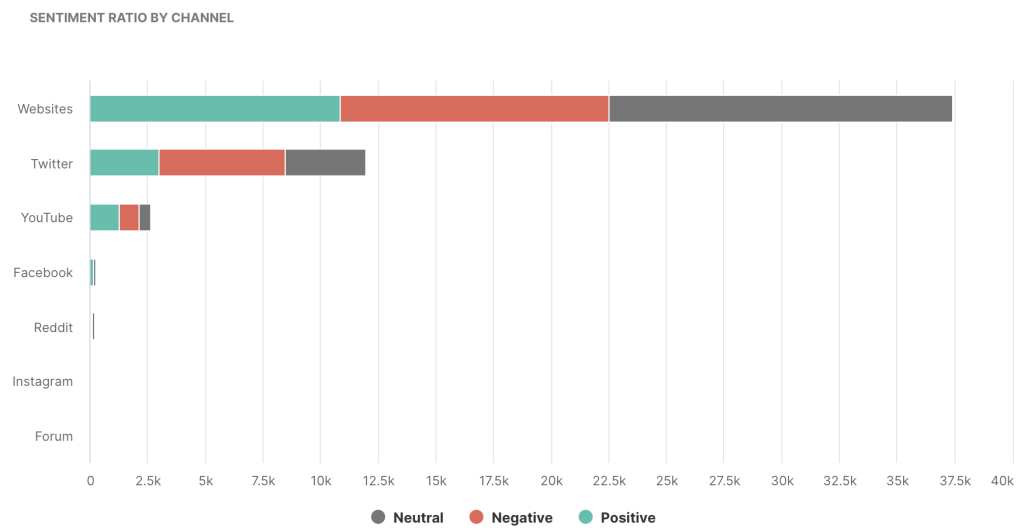
- See sentiment over time
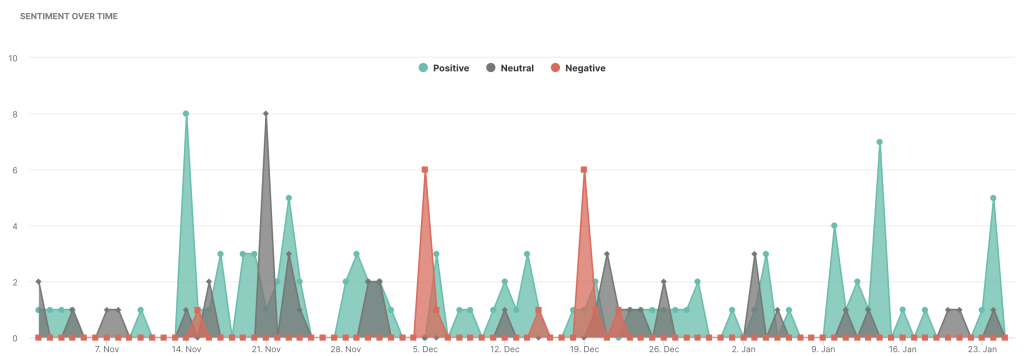
- Identify Top influencers by sentiment, since hashtags are heavily influenced by the most popular influencers who use them. Find an ambassador who could effectively promote your campaign.
You should know one more thing about hashtag sentiment tracking – your perspective may differ from the automatically determined sentiment. Human nature is simply something that machines cannot compete with yet.
Sometimes a sarcastic or ironic comment will be detected as a negative one, even though the writer didn’t mean anything negative. That is why, from time to time, you should check the sentiment on your own and see what’s going on.
Step #5 – Analyzing the Competition
By tracking hashtags, you can learn what your competitors are doing, their hashtag strategy, and what people are saying about them.
For example, some people might be unsatisfied with your national dog day event and share their thoughts about it. With Determ, you can notice such opinions and ensure that you don’t repeat the same mistakes. This is a great way to understand your target audience’s needs better.
As we mentioned earlier, in Determ, you have access to a complete competitive analysis. It will simplify your work and enable you to gather more insightful information such as mentions by channels, impressions, and SOV (share of voice).
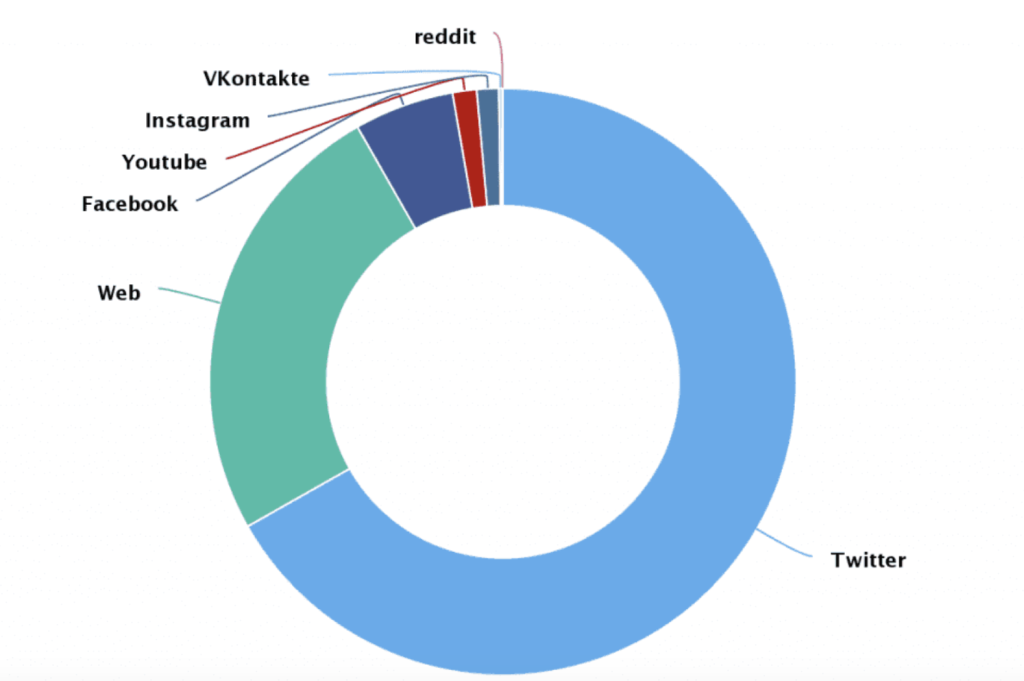
Why do you need this? Because you can:
- Identify potential improvements and changes that could put you ahead of the competition
- See how your brand is performing in comparison to competitors
- Spot hashtags trends earlier and use them to your advantage.
You are almost done. Following all five steps will give you a complete hashtag overview and help you develop a hashtag to boost your brand.
#TheEnd
Hashtags are certainly a way to raise brand awareness and visibility. However, it isn’t so easy to achieve that. As we have said, one condition has to be met – you need to optimize them.
Thankfully, that does not have to be done manually (can you imagine how long it would take?). With Determ, you will have access to reports full of valuable data without any spreadsheets, and all of the work will be done for you.
Detect, analyze, and draw conclusions. Pretty easy, don’t you think?
Follow these easy steps and make your hashtag tracking a piece of cake.
If you’d like to learn more about how Determ helps you track hashtags, book a demo and our experts will be happy to show you around.



